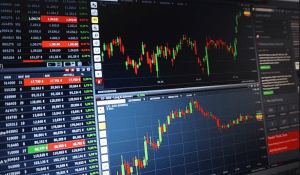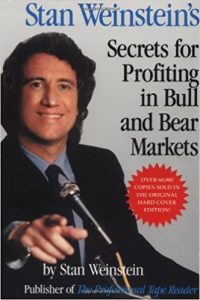Contents
The risks of loss from investing in CFDs can be substantial and the value of your investments may fluctuate. CFDs are complex instruments and come with a high risk of losing money rapidly due to leverage. You should consider whether you understand how this product works, and whether you can afford to take the high risk of losing your money. This strategy involves building a model that can identify when a large institutional firm is going to make a large trade, so you can trade against them. For this reason, quant requires a high degree of mathematical experience, coding proficiency and experience with the markets.
But once those markets get more popular and other big players come in, the market behaviour changes and opportunities get eroded significantly. The reason to trade less regulated and small markets is that those markets are less efficient. It is more feasible for retail traders to collect or scrape data off the web themselves. Satellite images of Walmart parking lots allow hedge fund to analyse the change in the number of people going to Walmart. Finally, we summarize the practical approaches to backtest overfitting. Using the lasso regression to detect trends, we can identify breakpoints and extract trends at the same time.
Finally, we talk about the shortcomings of most MVO style portfolio optimisation, and introduce a number of the standard performance measures used in measurement and allocation problems. We present portfolio optimisation as a regression and describe F-tests for statistical significance of changes in portfolio weights. We continue the discussion of the differences between P measure vs Q measure . While Q (where spot rates will always drift towards forwards or – ‘forwards are realised’) is an interesting construct, it is merely that. Realistically, in incomplete markets, Q is not actually unique and is merely a useful construct. Realistically speaking, spot rates tend to stay put, and random walks are much more likely than having realised forwards.
- Apart from algorithmic trading, quantitative trading includes high-frequency trading and statistical arbitrage.
- Because it is highly efficient in processing high volumes of data, C++ is a popular programming choice among algorithmic traders.
- If it diverges up, the system will calculate the probability of a profitable short trade.
- The opportunities in trend following has greatly diminished since the days of the Turtle Traders in the 1980s.
- By 2009, 60% of US stock trades were executed by HFT investors, who relied on mathematical models to back their strategies.
- As you’ll be investing in the stock market, you’ll need trading knowledge or experience with financial markets.
Systematic Quant funds are a rapidly rising part of the hedge fund and smart beta world. Although there is a large focus on high-frequency by academics, medium-to-low frequency algo trading accounts for over $350bn AUM and is the highest growth segment of the HF world. This algorithmic trading course covers the underlying principles behind algorithmic trading, including analyses of trend-following, carry, value, mean-reversion, and relative value strategies.
High-frequency trading involves millions of dollars of infrastructure and a team of PhDs so that’s out of the question. Machine learning techniques enable computers to do things without being told explicitly how to do them. Since relative speed is more important than absolute speed, HFT funds constantly try to be faster than their rivals. Thus, many new innovative strategies are created everyday and are not known to the general public. High-frequency trading describes trading that require high computing and communication speeds. Learn how to execute it from our “5 Futures Trading Strategies Guide“.
Guide to algorithmic trading and quant funds’ profitability
However, C or C++ are both more complex and difficult languages, so finance professionals looking entry into programming may be better suited transitioning to a more manageable language such as Python. Using these two simple instructions, a computer program will automatically monitor the stock price and place the buy and sell orders when the defined conditions are met. The trader no longer needs to monitor live prices and graphs or put in the orders manually. The algorithmic trading system does this automatically by correctly identifying the trading opportunity. The defined sets of instructions are based on timing, price, quantity, or any mathematical model. Apart from profit opportunities for the trader, algo-trading renders markets more liquid and trading more systematic by ruling out the impact of human emotions on trading activities.
A git-hub repository includes data-sets and explanatory/exercise Jupyter notebooks. The exercises involve adding the correct code to solve the particular analysis/problem. When any of the stocks diverge, the high-frequency trader will buy the cheaper one and/or short the pricier one.
How does quantitative trading work?
Among big investment banks and hedge funds trading with high frequency is also a popular practice. A great deal of all trades executed globally is done with high-frequency trading. The main aim of high-frequency trading is to perform trades based on market behaviors as fast and as scalable as possible. Though, high-frequency trading requires solid and somewhat expensive infrastructure. Firms that would like to perform trading with high frequency need to collocate their servers that run the algorithm near the market they are executing to minimize the latency as much as possible.

To learn more about relationship-based ads, online behavioral advertising and our privacy practices, please review Bank of America Online Privacy Notice and our Online Privacy FAQs. If you prefer that we do not use this information, what is lexatrade you may opt out of online behavioral advertising. In addition, financial advisors/Client Managers may continue to use information collected online to provide product and service information in accordance with account agreements.
The package also includes Quant Analyzer, software needed for portfolio analysis and construction, and EA Wizard an excellent program to develop trading ideas without knowing MQL programming. With automated workflow you can let the program do the work – generate and verify millions of trading strategies every day, while you can do something else. No programming required, strategies are exported in a full source code for the given trading platform, ready to be traded on demo or live account. Quants will write code that finds markets with a long-standing mean and highlight when it diverges from it. If it diverges up, the system will calculate the probability of a profitable short trade.
With a strategy in place, the next task is to turn it into a mathematical model, then refine it to increase returns and lower risk. Please ensure you understand how this product works and whether you can afford to take the high risk of losing money. Autotrading is a trading plan based on buy and sell orders that are automatically placed based on an underlying system or program. Available historical data for backtesting depending on the complexity of rules implemented in the algorithm. Algorithmic trading provides a more systematic approach to active trading than methods based on trader intuition or instinct.
EPAT has added a fundamental quantitative dimension to my existing skill-sets. Audience participation is as important to the learning experience as the instructor. I find the participants at QuantInsti’s courses highly how to invest in real estate with $5000 motivated and many came prepared with insightful questions. There are also a few other advantages such as automation in the allocation of assets, keeping a consistent discipline in trading and faster execution.
Trades are timed correctly and instantly to avoid significant price changes. Investments in infrastructure includes building a straight tunnel to lay communication lines and putting their servers right beside the financial exchange’s servers. HFT barefoot investor review funds spend hundreds of millions on hardware and software infrastructure to reduce their computing and communication speed by the milliseconds. When a traditional hedge fund buys a large amount of Stock A, a HFT hedge fund will detect that.
Want to try out using an automated system, but not sure if you’re ready for quant? Many use models to identify larger trades on a less regular basis, as part of a longer-term strategy. Let’s say, for example, that you hypothesise that the FTSE 100 is more likely to move in a certain direction at a particular point in the trading day.
Analysis, Design and Confirmation of Quantitative Trading Strategies
From simple tests to complex MonteCarlo and Walk Forward Matrix tests. This will help you filter out the malfunctioning strategies and you will get an idea of how successful strategies might behave in the future. StrategyQuant is really the only software that produces profitable strategies and evaluates completely its robustness. I highly recommend this product for people who want to take their Forex trading to the next level. I ask a question before I go to bed and, due to the time differential, the answer usually arrives the next morning.
But any parameter that can be distilled into a numerical value can be incorporated into a strategy. Some traders, for example, might build tools to monitor investor sentiment across social media. Strictly in terms of job prospects, most companies looking to hire quants prefer candidates with degrees in mathematics, engineering, or financial modeling. Additionally, they will need to have experience building automated systems and mining data. Quant traders must be highly skilled in computer programming and they must also be capable of working with data feeds and application programming interfaces . C++, Java, and Python are some of the coding languages with which the majority of quants are familiar.
There are different protocols available to get, process and send orders from software to market, such as TCP/IP, webhooks, FIX and etc. One important factor for this data processing from receiving to processing and pushing order is measured with latency. Latency is the time-delay introduced to the movement of data from points to points. Considering the changes in price in the market the lower obtained latency the better software reacts to market events hence a faster reaction.

While not always the easiest method, regularisation methods like lasso are helpful in many circumstances and also are a decent framework to think of the underlying problems. We give links to and summarize the handful of most important papers on statistical aspects of momentum trading for further study. Being well-known, these are also the most cited papers, and so any new academic research can be found just by searching preprints and papers which cite these important studies.
Statistical arbitrage
Like statistical arbitrage, algorithmic pattern recognition is often used by firms with access to powerful HFT systems. These are required to open and close positions ahead of an institutional investor. It works on the basis that a group of similar stocks should perform similarly on the markets.
Percent of Volume is a trading algorithm based on volume used to the execution of bigger orders without excessive impact on the market price. StrategyQuant uses machine learning techniques and genetic programming to automatically generate new automated systems for any market and timeframe. Or if you’re interested in automated trading but not sure about the mathematical or coding side of quant, you can use software like ProRealTime to start algorithmic trading. By understanding the rules of index additions and subtractions and utilising ultra-fast execution systems, quant funds can capitalise on this rule and trade ahead of the forced buying. For instance, by buying ABC Limited stock ahead of the ETF managers and selling it back to them for a higher price.

